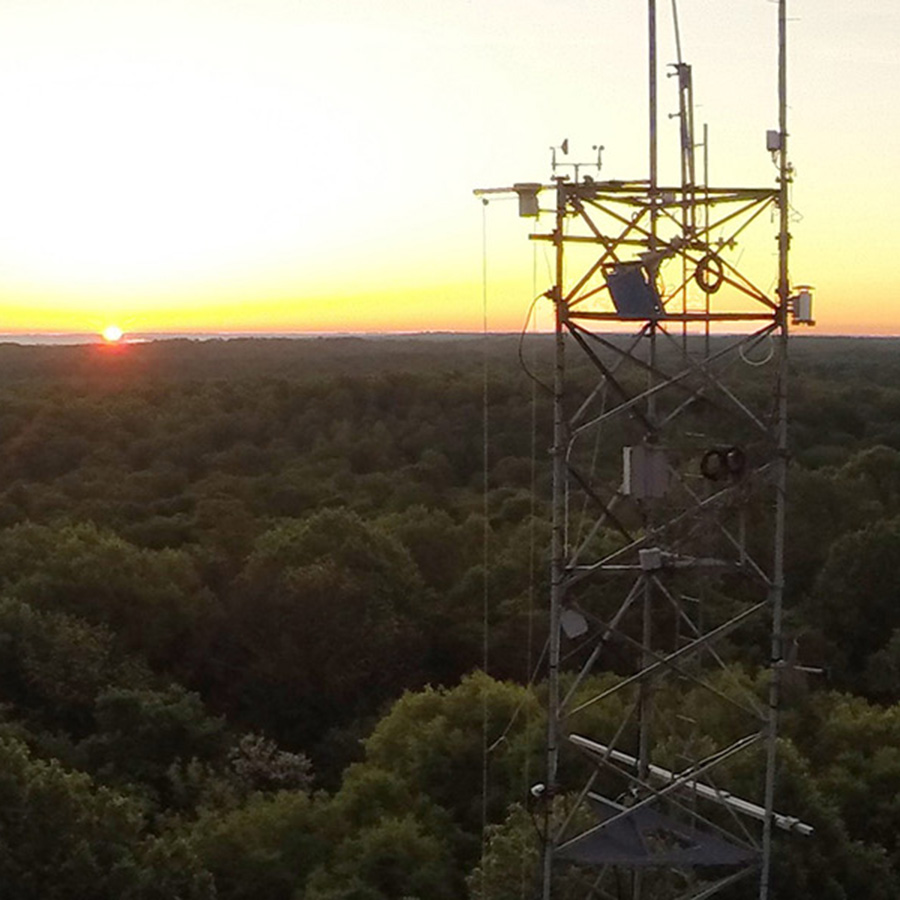BLOOMINGTON, Ind. - On April 8, the afternoon sky will darken to twilight, and life will pause as millions crane their heads up to witness the moon eclipse the face of the sun.
A solar eclipse visible from the contiguous United States will not happen again until 2044, and Bloomington residents can count themselves amongst the lucky 32 million residing along the U.S. pathway of total solar eclipse from Burlington, Vermont to San Antonio, Texas.
Local residents will be celebrating alongside an estimated 300,000 tourists expected to visit the area to watch the total eclipse and take part in three days of food, live music, and festivities at Switchyard Park, Cascades, and Griffy Lake. Businesses and organizations are also catering their menus and programming in anticipation of the bustling excitement already beginning to mount.
The day’s success, however, will ultimately be determined by weather conditions and cloud cover. Clear skies and no rain would make for ideal viewing conditions, but the National Weather Service’s weather models can only accurately predict conditions 10 days in advance. To remedy this uncomfortable level of uncertainty, IU researchers have engaged in an exploration of historical data on local rain and cloud cover to predict the chance of sub-optimal viewing conditions on April 8.
Siddhanth Hegde, a student pursuing his Masters in Data Science, led an analysis of more than 20 years of precipitation and solar radiation data gathered by the Morgan-Monroe State Forest flux tower. The flux tower, which is managed by scientists from the Paul H. O’Neill School of Public and Environmental Affairs, is one of hundreds of similar towers in the AmeriFlux network, a nationwide project gathering highly localized carbon, energy, and meteorology data across ecosystems.
The connection between precipitation and visibility is immediately obvious: rain, and its associated cloud cover, would make it difficult or impossible to view the solar eclipse. Hegde found that across 24 years, it rained on the afternoon of April 8 about 30% of the time. That means rain-free conditions during the eclipse are more likely than not. Good news so far!
Next, the group relied on historical solar radiation data from the tower to explore the possibility that cloud cover will obscure the eclipse. Specifically, Hedge analyzed the ratio of observed and potential incoming shortwave radiation. Incoming shortwave radiation is energy from the sun that is reflected or absorbed by the Earth’s atmosphere and surface. A ratio closer to one means that less incoming radiation from the sun is being reflected by clouds, an indicator of prime viewing conditions.
Here, the results are a bit more discouraging. The analysis revealed that there is a 27% probability of very cloudy conditions and a 36% probability of moderately cloudy conditions on the afternoon of April 8. Thus, the probability of sub-optimal eclipse viewing conditions is 63%.
“Witnessing a total eclipse of the sun is a rare chance,” Hegde said. “Even if the weather doesn't shine, it's still an unforgettable experience.”
What does this mean for your solar eclipse viewing parties?
The historical data predicts a relatively low probability of precipitation but a high probability of cloud cover that will obstruct a clear view of the total solar eclipse.
But don’t throw out your eclipse glasses just yet. Even if clouds obscure our ability to appreciate the finer details of the event, we will still witness a dramatic darkening of the sky. And even if the weather turns out to be uncooperative, it will not dampen the true joy of the eclipse—the opportunity to pause our hectic lives, interact with one another in community, and stare up at the sky in giddy anticipation together.


